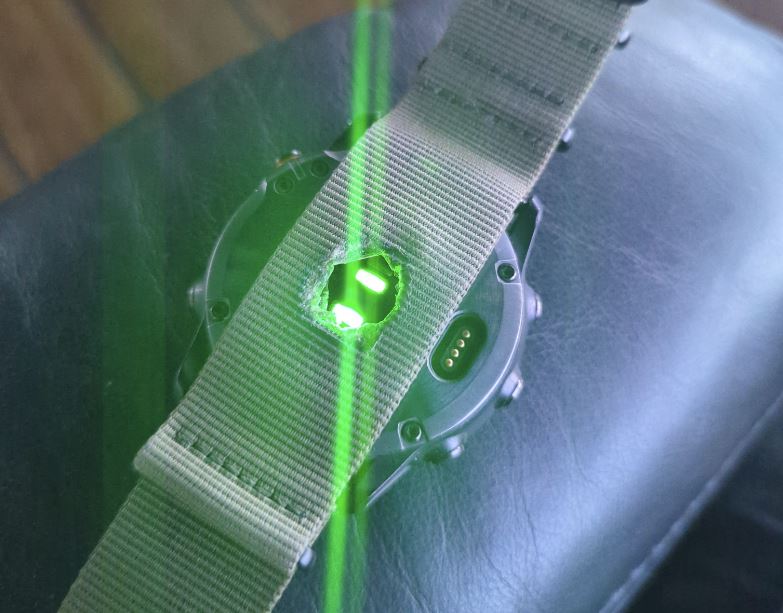Learn how this customer modified his NATO to work with a Garmin heart-rate sensor
At Watch Straps Australia, we pride ourselves on delivering high-quality, durable watch straps that meet the diverse needs of our customers. Our NATO watch straps, known for their strength and reliability, have become a favorite among adventurers, athletes, and everyday users.
However, one common challenge with our NATO straps has been their tendency to block the heart-rate sensor on smartwatches.
Today, we're excited to share a creative solution from one of our customers, a passionate surfer who modified our NATO strap to maintain heart-rate sensor functionality on his Garmin watch.
The Challenge
Smartwatch users rely on heart-rate sensors for a variety of health and fitness metrics. Unfortunately, the design of traditional NATO straps can obstruct these sensors, rendering them ineffective. For athletes like surfers, having a secure watch strap is crucial, but so is accessing real-time heart-rate data to monitor their performance and health.
The Customer
Meet Alex, a dedicated surfer from Australia's beautiful Gold Coast. Alex relies on his Garmin watch to track his heart-rate and other vital stats while riding the waves. He prefers NATO straps for their unbeatable security, ensuring his watch stays put no matter how intense the surf gets. However, the problem was clear: the strap was blocking the heart-rate sensor, preventing Alex from getting the full benefits of his Garmin watch.
The Solution
Determined to find a way to use his NATO strap without losing heart-rate monitoring capabilities, Alex got creative. Using simple tools and a bit of ingenuity, he modified his strap in a way that allowed the sensor to remain unobstructed. Here’s how Alex did it:
-
Identify the Position: Alex carefully marked the spot on the strap where the heart-rate sensor aligns with the back of his Garmin watch.
-
Create an Opening: Using a precision knife, Alex cut a small, clean hole in the strap, ensuring it was large enough to expose the sensor but small enough to maintain the strap’s integrity and strength.
-
Reinforce the Edges: To prevent fraying and ensure durability, Alex used a lighter to slightly melt the edges of the cut area. This step was crucial to maintain the strap's longevity and prevent any wear and tear from spreading.
-
Test and Adjust: After the modification, Alex tested the strap to ensure the heart-rate sensor was working correctly and that the strap still provided the same level of security. He made minor adjustments to perfect the fit and functionality.
The Result
Alex's modification was a success!
He now enjoys the best of both worlds: a secure NATO strap that keeps his Garmin watch firmly in place during his surfing sessions and an unobstructed heart-rate sensor that allows him to monitor his performance and health metrics accurately.
Why This Matters
Alex’s innovative approach highlights the adaptability and potential for customization with our NATO straps. His modification not only solved a common problem but also showcased the durability and versatility of our products. This case study serves as an inspiration for other Garmin watch users who might face similar challenges.
Conclusion
At Watch Straps Australia, we are inspired by customers like Alex who find creative solutions to enhance their experience with our products. We are committed to continuously improving our offerings and listening to the valuable feedback from our community. If you’ve come up with your own modifications or have ideas to share, we’d love to hear from you!
Stay secure, stay connected, and ride the waves with confidence.
Posted on 06 July 2024 by Brad

